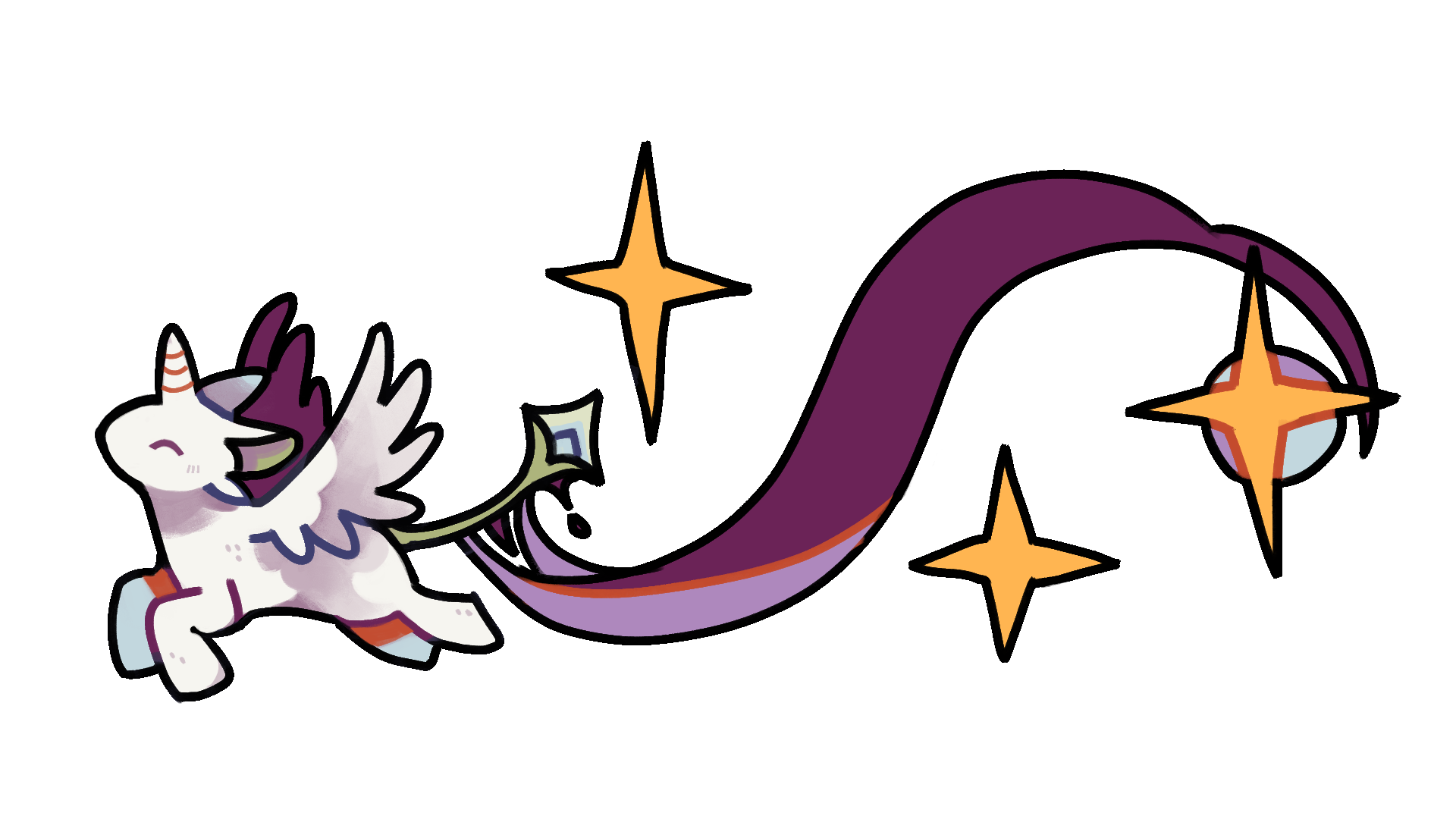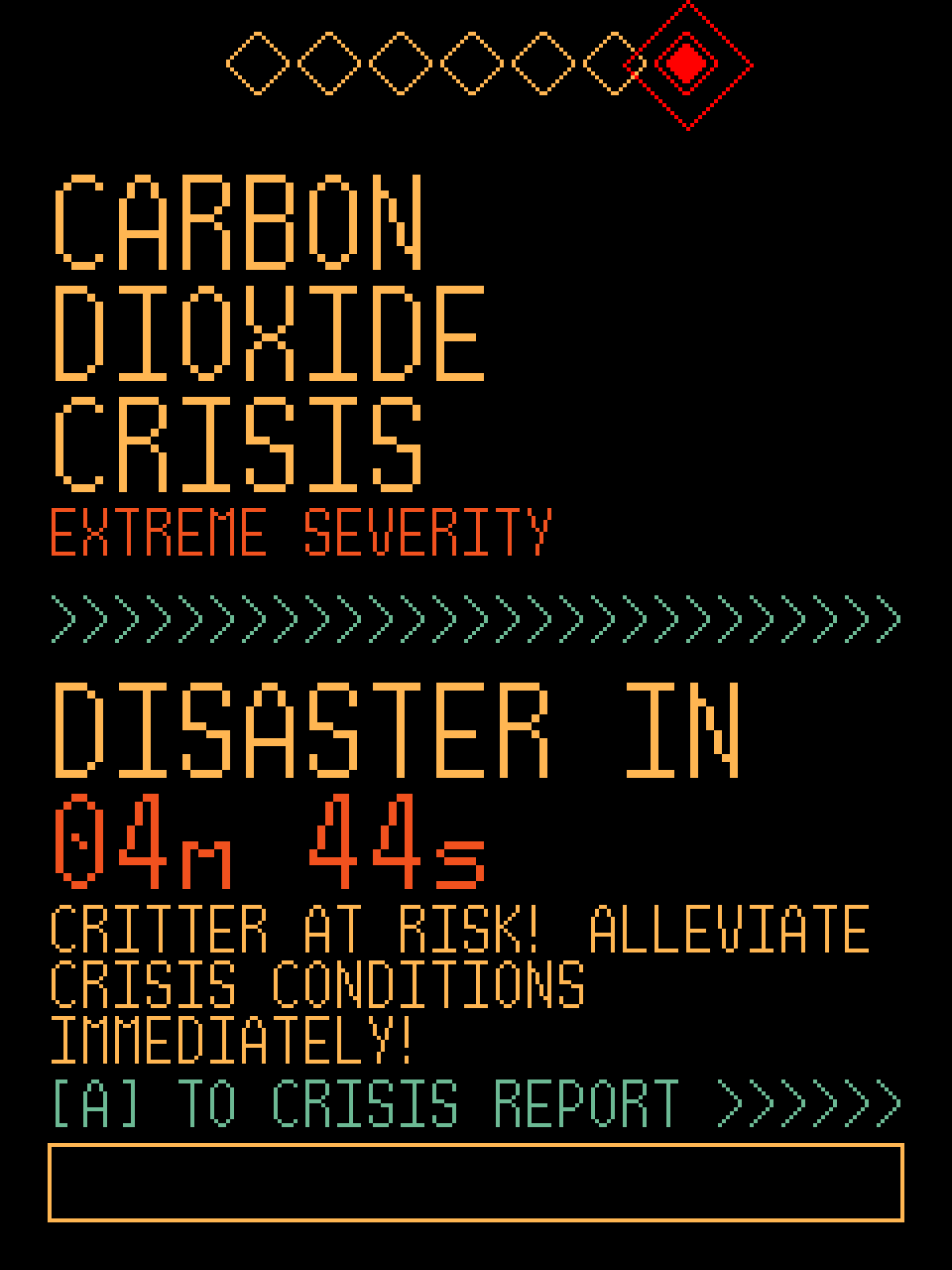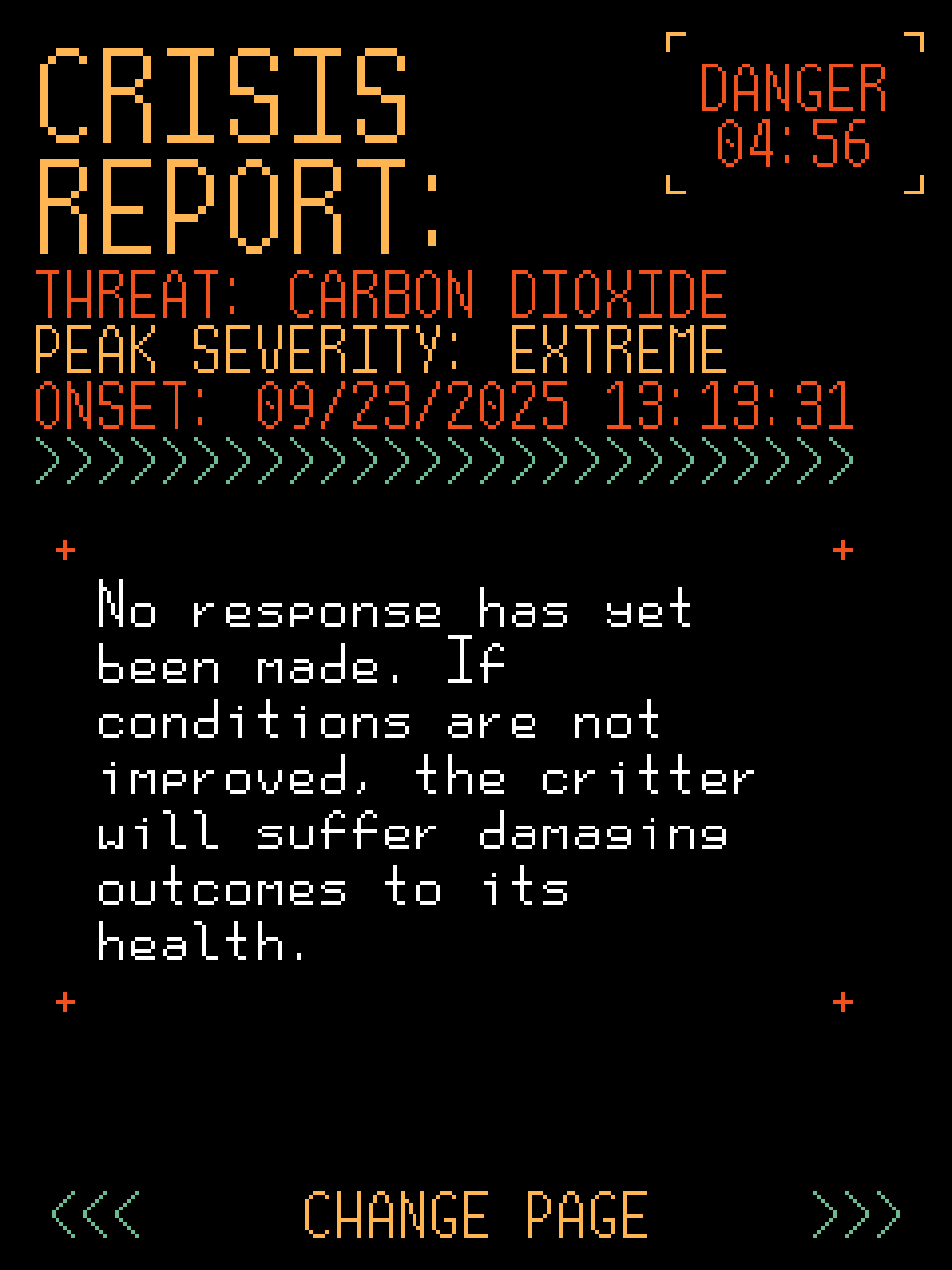
Crises

Crises occur when the uCritAir detects that air quality has reached critical badness in some way.
There are various crisis types and severity levels that correspond to different air quality metrics and the points at which they become worrisome.
In-game avenues for alleviating crises exist, but crises are fundamentally intended to inform you of real-life air quality and prompt real-life mitigation efforts.
Type and Severity
With some exceptions, for each crisis type, a crisis of each severity level is possible.
There are 4 crisis types:
- Carbon Dioxide (CO2)
- Particulate Matter (PM 2.5)
- Volatile Compounds (VOx/NOC)
- Wet Bulb (Temp./RH)
And 3 severity levels:
If multiple metrics are bad enough to cause a crisis, the crisis type for which the most severe conditions are present is made active.
Mitigation
Crises can be mitigated either naturally or via in-game intervention.
Gameplay interventions work via the sacrifice of mitigation items that you may keep in your inventory or place in your apartment.
Carbon Dioxide crises can be mitigated by consuming a UV lamp placed in the apartment.
Mild Particulate Matter or Volatile Compounds crises can be mitigated by consuming a mask from the inventory.
More severe crises of those types be mitigated by consuming an air purifier placed in the apartment.
It's important to keep in mind that in-game mitigations only dismiss in-game crises.
The real-life air quality that spawned the crisis will continue to affect you and, after the crisis cooldown has passed, will even continue to affect your critter.
The best way to deal with any air quality crisis is to improve the quality of the air around you.
Effects
Any crisis that is left unmitigated for too long will affect your critter's lifespan.
Lifespan damage is only dealt once per crisis, and scales according to the crisis' severity as well as the degree of neglect.
The crisis dashboard and crisis report will both clearly indicate the amount of time left until a crisis turns disastrous and deals lifespan damage.


